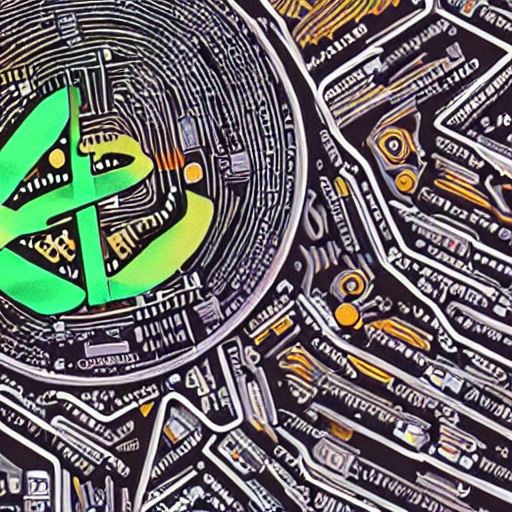
How do NFTs revolutionize the way we perceive and interact with digital assets?
NFTs revolutionize the way we perceive and interact with digital assets by providing a unique and immutable ownership experience. With NFTs, digital assets can now be truly scarce and one-of-a-kind, bridging the gap between the physical and digital worlds. This opens up new possibilities for artists to monetize their work, as they can now sell digital artwork directly to collectors without the need for intermediaries. Additionally, NFTs enable creators to embed royalties in their work, ensuring that they continue to benefit financially from subsequent sales. This unprecedented level of ownership and control over digital assets has the potential to reshape industries such as art, music, and gaming, empowering creators and collectors in ways that were previously not possible.
What are the challenges and concerns surrounding the energy consumption and environmental impact of NFTs?
The energy consumption and environmental impact of NFTs have been a growing concern. The process of minting and trading NFTs requires significant computing power, which in turn consumes a large amount of energy. This energy consumption contributes to carbon emissions and environmental degradation. Critics argue that the carbon footprint of NFTs outweighs their perceived value, particularly when compared to traditional art forms. However, it is important to note that the blockchain technology underlying NFTs is constantly evolving, and efforts are being made to develop more energy-efficient alternatives. Additionally, some artists and platforms have started to explore carbon offsetting initiatives and eco-friendly NFT marketplaces to mitigate the environmental impact.
What is the symbiotic relationship between NFTs and cryptocurrencies and how does it impact the volatility and potential risks of NFT investments?
The symbiotic relationship between NFTs and cryptocurrencies has both benefits and potential risks. NFTs are typically bought and sold using cryptocurrencies, such as Ethereum, providing a seamless and secure transaction process. This connection has fueled the rise of NFTs as an investment opportunity, as cryptocurrencies have experienced significant volatility and appreciation in value. However, this also means that NFT investments are exposed to the same risks and uncertainties as cryptocurrencies. The value of NFTs can fluctuate dramatically, and investors need to carefully consider market dynamics, scarcity, and demand when making investment decisions. Additionally, the lack of regulatory clarity surrounding NFTs and cryptocurrencies adds another layer of risk. As the market continues to evolve, it is important for investors to stay informed and assess the potential risks and rewards of NFT investments.
Full summary
In the ever-evolving world of digital innovation, one trend has taken the art and technology scene by storm - non-fungible tokens (NFTs) and blockchain. As the world becomes increasingly digital, NFTs have emerged as a novel and exciting concept, revolutionizing the way we perceive and interact with digital assets.
To grasp the significance of NFTs, we must first understand what they are and how they function. NFTs are unique digital assets that are stored on a blockchain, a decentralized and transparent digital ledger. Unlike cryptocurrencies, which are fungible and interchangeable, NFTs cannot be replicated or substituted, making them one-of-a-kind.
NFTs have gained momentum due to their immense potential in various industries, including art, music, and gaming. The inherent value of an NFT lies in its exclusivity, immutability, and authenticity. These characteristics have sparked a frenzy among collectors, investors, and creators alike, raising questions about their significance in the digital world.
The relationship between NFTs and cryptocurrency is a symbiotic one. NFTs are typically bought and sold using cryptocurrency, leveraging the security and transparency of blockchain technology. This connection has fueled the rise of NFTs as an investment opportunity, raising concerns about their volatility and potential risks.
While NFTs and blockchain have opened up new avenues for creativity and investment, they have also faced criticism for their environmental impact. The energy consumption associated with minting and trading NFTs has sparked debates and calls for greener alternatives. Additionally, the regulatory landscape surrounding NFTs remains ambiguous, with different jurisdictions grappling with how to classify and regulate these digital assets.
The integration of NFTs and cryptocurrencies into the gaming industry has resulted in a paradigm shift for both players and developers. Gaming companies are exploring innovative ways to leverage NFT technology, offering players the opportunity to own and trade in-game assets. While this integration has faced challenges and backlash, the future of NFTs in gaming is contingent upon player adoption and the industry's ability to navigate evolving trends.
With the rapid growth of the NFT market, investors are weighing the pros and cons of allocating funds to this emerging asset class. Advantages include easy access, blockchain security, and the opportunity to learn about blockchain technology. However, there are concerns surrounding the energy-intensive creation process, potential fraud, and the need for cryptocurrency to purchase NFTs. Careful consideration of the underlying asset's value and market dynamics is crucial for investors navigating the NFT space.
As NFTs continue to capture the imagination of artists, creators, investors, and technologists, it is clear that they hold immense potential to reshape the art market and redefine digital ownership. However, the journey towards mainstream adoption and regulatory clarity is still underway. It remains to be seen how NFTs will evolve and whether they will stand the test of time.
The impact of NFTs and blockchain technology is far-reaching and multidimensional. From revolutionizing the art market to transforming gaming experiences, NFTs have sparked a global conversation about the intersection of digital innovation and traditional industries. While challenges and concerns persist, the potential for NFTs to empower creators, democratize access, and revolutionize ownership is undeniable. As we navigate this digital frontier, it is essential to strike a balance between innovation and sustainability, ensuring that NFTs and blockchain technology continue to thrive while addressing environmental and regulatory considerations.
This article was written in collaboration with multiple sources, spanning various contexts and events related to NFTs and blockchain technology.







